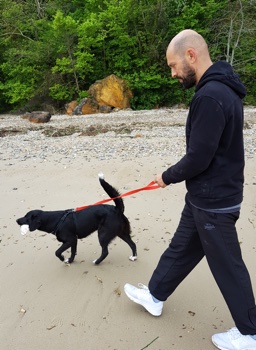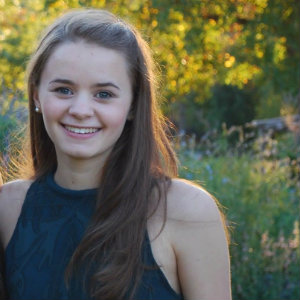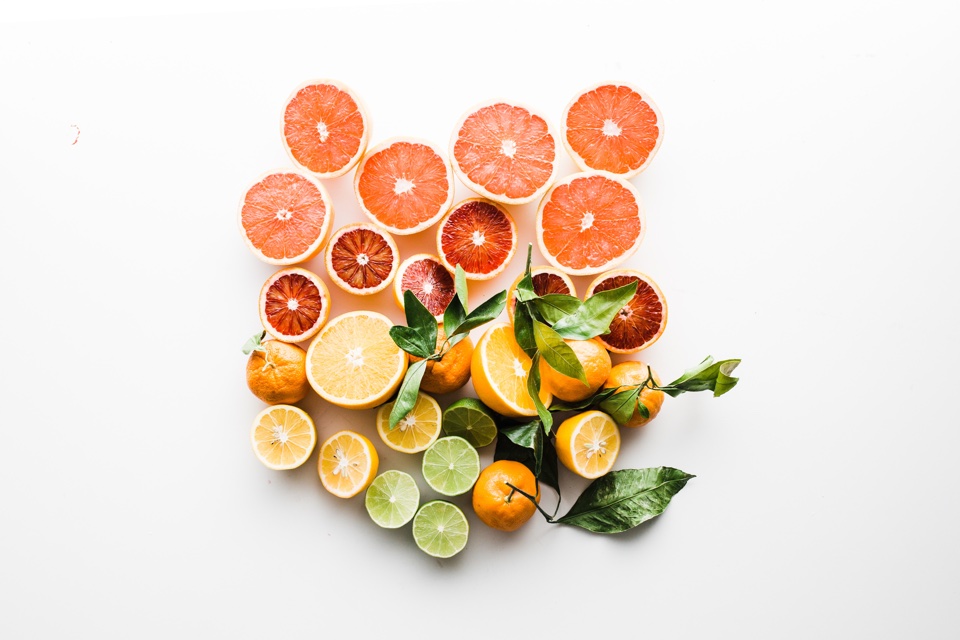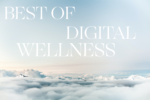Fasting with Mark Baker
We sat down with Mark to learn more about his philosophy, and why fasting might be the answer to many of our health issues.
Mark Baker is changing the way we think about exercise and nutrition. His new book, Anaerobics: Destruction & Reconstruction emphasizes the importance of chronic training, or short periods of intense activity, to develop robustness in our bodies. Without putting constant stress on our muscles, anaerobic exercise mirrors how we would behave in the wild, reacting to threats, or sprinting to escape danger. Above all, though, Mark is a fasting advocate. He encourages a shift away from three meals a day and towards healthier, intermittent eating habits. We sat down with Mark to learn more about his philosophy, and why fasting might be the answer to many of our health issues.

Can you tell us about the experiences that brought you to where you are today?
I’ve been interested in health and exercise for as long as I can remember – as a youngster I was always outdoors playing football, Frisbee or climbing trees and generally being very active. I used to go on long cycles, set out in the morning and not come back until the evening. When I was older, I joined an athletic club and trained for 800 meters, but a few years later changed to sprinting. I come from a sporty family, my father was a good boxer and my cousin was an Olympic hurdler.
I studied Sport Science and Biology at my university. Even though I knew about fasting, it was the author and probabilist, Nassim Nicholas Taleb, who really sparked my interest. Since then, I’ve been hooked. The whole area is fascinating.
A good friend, Michael Sagner, editor-in-chief of ‘Progress in Preventive Medicine’ has a particular interest in fasting from a medical point of view; we have had many stimulating conversations over dinner, surrounded by rather too much food!
Studies show that aging and disease back off in the face of hunger.
For our readers who are not familiar with intermittent fasting, can you enlighten them?
In my opinion, the rationale for fasting is quite straightforward. The human body has evolved to cope with conditions of food scarcity. We now live in an environment where we have a constant supply of food; furthermore, we hardly need to expend energy to get it, unlike our pre-agricultural ancestors who had to forage and hunt for their dinner. All fasting is doing is replicating how nature would have delivered food when we lived on the African plains.
Fasts can broadly be classified as intermittent (IF) or periodic (PF) – the difference being the length and frequency of the fasting cycles.
Intermittent:
24-36 hrs every week or fortnight.
2 days a week – ‘5:2’ style.
Alternate or every other day’ – no food one day; normal eating the next.
Random foregoing of meals.
Periodic:
2 to 5 days straight – upwards of two weeks between.
Extreme fasts of up to 30 days; once a year.
Additionally, there is time-restricted eating where all the day’s calories are consumed within an 8-hour window (16/8 fast) or less. One meal a day (OMAD) is becoming more popular.
Studies show that aging and disease back off in the face of hunger. Intermittent fasting promotes the body’s ability to remove and recycle molecular ‘rubbish’ in a process called autophagy. Other studies show that fasting can help reduce inflammation, insulin resistance, and type 2 diabetes. Fasting seems to have neuro-protective and tumor suppressive effects, but much more research needs to be in this and other areas. Many people use fasting for weight-loss, as it has proven to be effective for this. I personally don’t do it for this reason – to me the effects of fasting go far deeper than its use as a slimming aid.
The positive effects of fasting come from the intermittent absence of food, not the weekly or monthly decrease in calories.
What is the best way to start?
I have recently completed a five-day fast with friends, but I wouldn’t recommend trying that for the first time! I think most people would find 16/8 pretty easy. I’ve completed a number of multi-day fasts so that not eating for a day is very easy. The vast majority of people would have no problem with not eating for a day; any feelings of hunger quickly subside. Sometimes what we think of as ‘hunger’ is just a habit.
Some people may find they eat less on their non-fast days as they have broken their submissive relationship with food. This may be a welcome (and revelatory) side effect, however. Unless you’re specifically on a calorie reduction program, it’s not necessary. The positive effects of fasting come from the intermittent absence of food, not the weekly or monthly decrease in calories.
Food contains a lot of water, so in its absence it’s important to drink more to keep hydrated. I still drink tea and coffee during fasting but many choose not to.
It’s good to undertake a fast with a friend; the social support definitely helps, especially on longer fasts.
What advice do you have on breaking a fast?
My fasts are without food but I usually have some bouillon for salts. People react differently to the reintroduction of food on breaking a fast. I find I can eat a lot without any problems, other people prefer to end a fast with only a small amount of food as too much gives them digestive problems. This may depend on the length of the fast and the type of food eaten. The best thing is trial and error – see what suits you. I generally prefer savory, but I don’t have a preference for any particular food. All food tastes good after a fast!
Everything operates under dose-response in that a little of something which is supposedly bad for you is not a problem.
What foods have you removed from your diet?
I believe that subtracting foods which ‘harm’ has the most dividends for heath; however, everything operates under dose-response in that a little of something which is supposedly bad for you is not a problem. In this case there is very little I won’t eat. The problem is when a significant percentage of one’s diet is made up of junk food.
I am an absolutist in some things! I don’t drink coca-cola, as I don’t want to give my money to a corporation which pushes chemicals and sugar, plus it tastes disgusting to me.
What would you recommend for promoting a healthier work environment? (ex: snacks, essential oils, a plant, a water filter…)
Work often involves stress, pressure and deadlines, there’s no getting away from that – employment isn’t a ‘mind, body, spirit’ retreat. However, I do think it’s up to large employers, as far as possible, to provide an environment which is conducive to the well-being of their work force.
People need access to an ‘oasis’, indoors or outdoors – a place where they can de-stress. If these areas provide access to non-junk food and refreshments, all the better.
Unfortunately, there are still many employers who think it’s acceptable only providing dingy common-rooms with a vending machine selling crisps and confectionary. Clued-up employers provide well-designed and well-kept, light, airy spaces where people can relax and recharge their batteries. People need access to an ‘oasis’, indoors or outdoors – a place where they can de-stress. If these areas provide access to non-junk food and refreshments, all the better. People aren’t robots, they are affected by their environment.
I’m half-Swiss, and in Switzerland the working day starts earlier, while they tend to have longer lunches. This gives people time to relax and enjoy their lunch away from the work place. In the UK, people seem just as harried during their lunch break as at work – by the time they’ve bought a sandwich or a snack it’s practically time to go back to work.
When I worked nine to five I organize my own workspace, filling it (to a point!) with plants and art – things that matter to me. We can all do a bit to make our working environment a little better.
Photo by Brooke Lark

Lani Allen is a graduate of Columbia University’s Non-fiction Creative Writing program. After serving as Vice President of her class for two years, she contributed written pieces and illustrations to many on-campus publications. As a writer with a passion for beauty, Lani enjoys capturing the stories of innovative thinkers and risk-takers shaping the industry as we know it.







